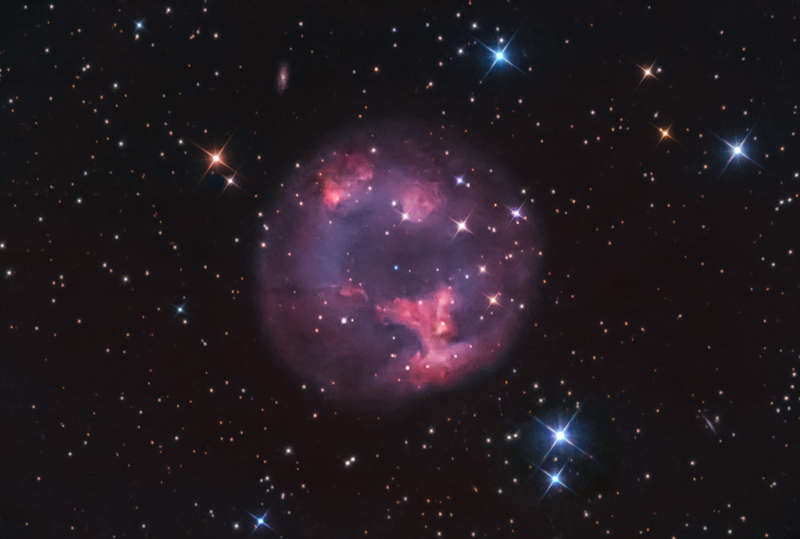
|
Credit & Copyright: Donald Waid,
Ron Dilulio
Explanation:
Very faint planetary nebula Abell 7 is some 1,800 light-years distant,
just south of Orion in planet Earth's skies in the constellation
Lepus, The
Hare.
Surrounded by Milky Way stars and near the line-of-sight to
distant background galaxies, its
generally
simple spherical shape, about 8 light-years in diameter, is outlined in
this deep telescopic
image.
Within its confines are beautiful, more complex details enhanced
by the use of narrowband filters.
Emission from hydrogen is shown in reddish hues with oxygen
emission mapped to green and blue colors, giving Abell 7 a natural
appearance that would otherwise be much too faint to be appreciated
by eye.
A planetary
nebula represents a very brief final phase
in stellar evolution that our own Sun will experience 5 billion
years hence,
as the nebula's central, once sun-like star
shrugs off its outer layers.
Abell 7 itself is estimated to be 20,000 years old.
Its central star is seen here as a
fading
white dwarf
some 10 billion years old.
|
January February March April May June July August September October November December |
| |||||||||||||||||||||||||||||||||||||||||||||||||||||||
NASA Web Site Statements, Warnings, and Disclaimers
NASA Official: Jay Norris. Specific rights apply.
A service of: LHEA at NASA / GSFC
& Michigan Tech. U.
Based on Astronomy Picture
Of the Day
Publications with keywords: planetary nebula
Publications with words: planetary nebula
See also:
- APOD: 2025 August 31 Á NGC 7027: The Pillow Planetary Nebula
- APOD: 2025 August 22 Á A Tale of Two Nebulae
- APOD: 2025 August 5 Á NGC 6072: A Complex Planetary Nebula from Webb
- APOD: 2025 July 29 Á A Helix Nebula Deep Field
- APOD: 2025 July 13 Á Planetary Nebula Mz3: The Ant Nebula
- APOD: 2025 June 9 Á Between Scylla and Charybdis: A Double Cosmic Discovery
- APOD: 2025 May 14 Á NGC 1360: The Robins Egg Nebula
